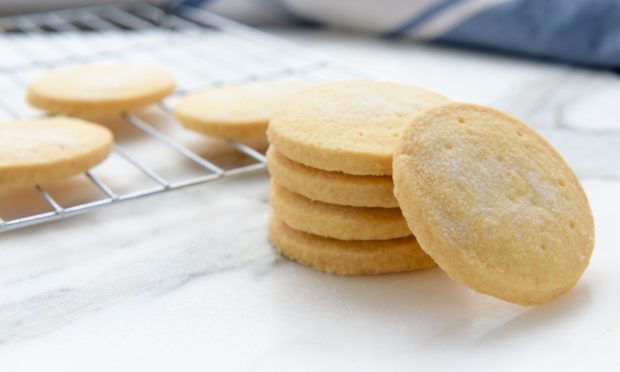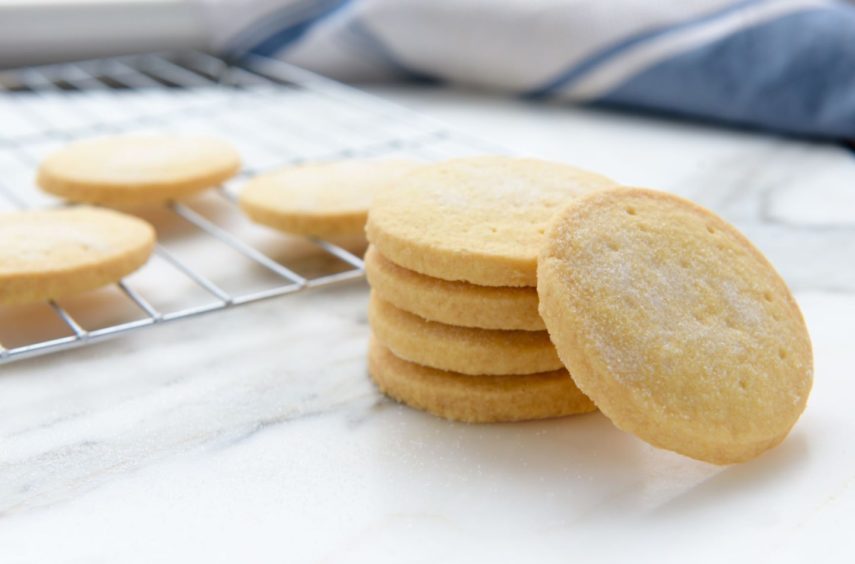One of the top days in the Scottish foodie calendar is here and we have a recipe to help you make the most of it.
Today is perhaps one of the most Scottish days there is – National Shortbread Day – and we’re taking a moment to recognise the fine biscuit with this recipe below from former Great British Bake Off contestant James Morton.
Did you know the golden biscuit is said to link back to Mary Queen of Scots with it originating from leftover dough from bread? We spoke to the Walkers shortbread family about the history behind the Scottish delicacy last year – read the interview here.
One thing is for sure, shortbread won’t be going out of style anytime soon and now that we’re spending a lot more time in our kitchens, we can’t think of a better reason than to celebrate National Shortbread Day than whipping up a batch for ourselves.
Recipe by James Morton for Graham’s the Family Dairy.
Ultimate shortbread
(Makes 20)
Ingredients
- 50g caster sugar
- 100g unsalted butter, cold
- 150g plain flour
Method
- First, line a baking tray with a sheet of non-stick greaseproof paper. There’s no need to grease either side – the biscuits are plenty buttery to stop any stickage. Using your hands or a wooden spoon, smoosh together your sugar and butter in a large bowl.
- You DO NOT want to “cream them until light and fluffy” like in a cake – you just want them combined.
- Add your flour and use your hands to bring the mix together into a soft dough – this can take a bit of work. Don’t overdo it, otherwise you’ll end up with cardboard-like shortbread.
- After this, wrap the dough in cling film and place in the fridge. You should leave it at least half an hour, but up to 2 days. When you are ready to roll, preheat your oven to 160C/140C Fan/300F/Gas Mark 2.
- Remove your shortbread from its cling film and place it on a floured surface. Sprinkle more flour on top, then roll it out (making sure it’s not sticking) until it is the thickness of a £1 coin.
- Cut into desired shapes using a biscuit cutter and place each on your prepared tray. You can re-roll when you’ve exhausted available cutting space. Once your tray is filled, prick each biscuit with a fork a few times and scatter them with sugar.
- Place the tray back in the fridge for 10-15 minutes. Think about it – shortbread is just pastry but with a bit more butter and sugar. The same rules apply and so the longer you chill it, the crumblier it will be.
- Bake your shortbread, straight from the fridge, for 10-12 minutes. They should come out pale, but with a tiny little bit of colour appearing around the edges of some of them. Don’t bake until golden, or else you’ll have snappy, bitter biscuits.

